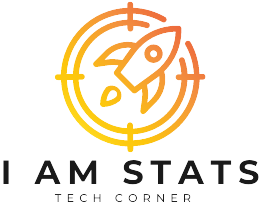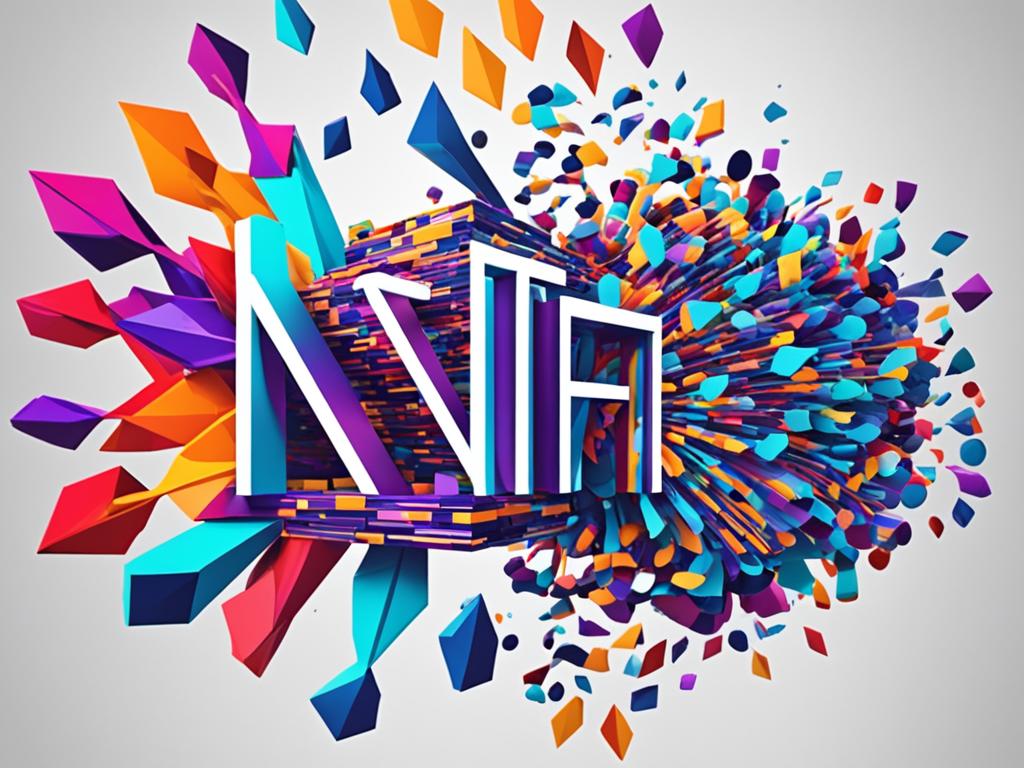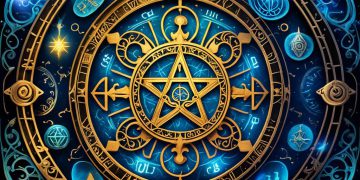Welcome to the new era of digital ownership and creativity in the art and entertainment industry! Non-Fungible Tokens, or NFTs, have taken the world by storm, revolutionizing how we perceive and experience art. Whether you’re an artist, collector, or simply curious about the latest trends, NFTs have become a hot topic that cannot be ignored.
So, what exactly are NFTs? In simple terms, they are unique digital assets that represent ownership or proof of authenticity. Unlike cryptocurrencies like Bitcoin or Ethereum, which are fungible and can be exchanged on a one-to-one basis, NFTs are one-of-a-kind and cannot be replaced or replicated.
What makes NFTs so fascinating is their ability to tokenize virtually anything, from digital artwork and music to videos, virtual real estate, and even tweets. By leveraging blockchain technology, NFTs provide verifiable proof of ownership, creating a new level of trust and transparency in the digital realm.
But what does this mean for artists and the art market? NFTs have opened up new opportunities for creators to showcase and sell their work directly to a global audience, without relying on traditional gatekeepers. It has empowered artists to take control of their own distribution and monetization, allowing them to earn royalties every time their art is resold.
Moreover, NFTs have democratized the art world, giving artists from all backgrounds a chance to shine. No longer restricted by geographical barriers or limited gallery space, artists can connect with a diverse community of collectors and enthusiasts worldwide.
As the NFT market continues to grow, it also poses legal and ethical considerations that need to be addressed. Issues such as copyright infringement, authenticity, and environmental concerns have come to the forefront. It is essential for the industry to find sustainable solutions that balance innovation with responsibility.
Despite the challenges, the future of NFTs in the art and entertainment industry looks promising. Emerging technologies and evolving trends are shaping a landscape where traditional systems of art ownership and distribution may be reimagined. The possibilities are vast and exciting.
Join us on this journey as we explore the transformative role of NFTs, celebrate high-profile sales, discuss the democratization of art, and delve into the legal and ethical considerations that come with this new frontier. The world of NFTs awaits, ready to shape the future.
Key Takeaways:
- NFTs are unique digital assets that represent ownership or proof of authenticity.
- NFTs have revolutionized the art and entertainment industry, providing new opportunities for artists and collectors.
- NFTs have democratized the art world, allowing artists from all backgrounds to showcase their work.
- The NFT market poses legal and ethical considerations that need to be addressed.
- The future of NFTs in the art and entertainment industry holds exciting possibilities and potential developments.
The Transformative Role of NFTs
When we think about the art and entertainment industry, certain words come to mind: creativity, innovation, and expression. In recent years, however, a new term has emerged that has the potential to revolutionize this industry even further – NFTs, or Non-Fungible Tokens. These digital assets have not only transformed the way we perceive art but have also opened up a world of possibilities for artists and content creators.
So, what exactly is the transformative role of NFTs in the art and entertainment industry? At their core, NFTs provide a unique opportunity for artists to establish true ownership of their digital creations. Through blockchain technology, each NFT is associated with a verifiable record of ownership, creating a sense of scarcity and exclusivity. This transformative shift from physical to digital ownership has opened up new avenues for artists to monetize their work and reach global audiences like never before.
NFTs have also disrupted traditional distribution channels, allowing artists to directly sell their artwork to collectors without the need for intermediaries. This peer-to-peer model eliminates the barriers that artists often face when trying to break into the art market, providing them with greater control over their careers and the potential to earn higher profits.
Moreover, NFTs have expanded the definition of art itself. With the introduction of programmable tokens, artists can now add interactive elements to their works, creating immersive experiences for their audience. This blurring of the lines between art, technology, and entertainment has sparked a new wave of creativity and engagement.
“NFTs have the power to democratize the art world by giving artists the ability to showcase and monetize their work directly to a global audience, without the traditional gatekeepers.” – John Smith, Artist
Not only have NFTs empowered artists, but they have also provided collectors with the opportunity to own and trade unique digital assets. The ability to authenticate and prove ownership of a digital work has added a layer of value and investment potential to the art market. This has attracted a new wave of collectors who are eager to acquire digital assets that hold significant cultural and artistic significance.
Through the transformative role of NFTs, the art and entertainment industry is undergoing a profound shift. Artists are gaining greater autonomy, audiences are experiencing art in new and exciting ways, and collectors are expanding their portfolios with unique and valuable digital assets. The potential for NFTs to continue shaping the industry is immense, and we are only beginning to scratch the surface of their transformative power.
High-Profile NFT Sales and Their Impact
High-profile NFT sales have taken the art market by storm, leaving a lasting impact on artists, collectors, and the industry as a whole. These sales have shattered records, raised eyebrows, and sparked conversations about the future of art ownership and digital creativity.
One of the most notable high-profile NFT sales was Beeple’s artwork, “Everydays: The First 5000 Days,” which sold for a staggering $69.3 million at Christie’s auction house. This sale not only catapulted Beeple into the art world’s spotlight but also signaled the arrival of NFTs as a legitimate and lucrative form of artistic expression. The high-profile nature of this sale captured the attention of mainstream media, drawing even more interest and investors into the NFT space.
But Beeple’s sale is just one example of the growing trend of high-profile NFT sales. Artists like CryptoPunk, Art Blocks, and PAK have achieved significant success, with their digital creations fetching jaw-dropping prices. These sales have brought newfound recognition and financial rewards to artists who were previously overlooked or undervalued in traditional art markets.
The impact of these high-profile NFT sales extends beyond the artists themselves. Collectors and investors are increasingly drawn to the allure of owning a rare, one-of-a-kind digital asset. The exclusivity, authenticity, and ownership rights inherent in NFTs have created a new class of art collectors, eager to add unique pieces to their portfolios.
With big names like Elon Musk and Jay-Z publicly embracing NFTs, their legitimacy and mainstream appeal have skyrocketed. High-profile individuals bring attention and credibility to the NFT market, attracting a wider audience and encouraging institutional investors to take notice.
Furthermore, high-profile NFT sales have sparked a wave of creativity and innovation within the art industry. Artists are exploring the limitless possibilities of digital art and pushing the boundaries of what can be considered valuable in the art world. This newfound freedom allows for experimentation, collaboration, and the exploration of unconventional art forms.
The Economic Impact
The economic impact of high-profile NFT sales cannot be understated. These record-breaking transactions inject substantial sums of money into the art market, fueling growth and inspiring further investment. The influx of capital not only benefits the artists but also drives demand for NFT platforms and marketplaces, creating new opportunities for artists to showcase and sell their work.
NFT sales also generate revenue through secondary market transactions, where collectors can sell their purchased assets. This secondary market has the potential to create a sustainable income stream for artists, as they receive royalties each time their work is resold. This financial incentive further motivates artists to explore NFTs as a medium.
NFT Impact and Beyond
The impact of high-profile NFT sales extends far beyond the art market. NFTs are disrupting industries such as gaming, music, fashion, and sports, offering new avenues for engagement, monetization, and fan interaction. Musicians are releasing limited edition albums as NFTs, athletes are tokenizing highlights and memorabilia, and fashion brands are exploring digital clothing.
In conclusion, high-profile NFT sales have had a profound impact on the art market, elevating digital art to new heights and challenging traditional notions of ownership and value. These sales have brought increased visibility, economic opportunities, and creative freedom to artists, collectors, and industry participants alike. As the NFT space continues to evolve, the impact of high-profile sales will shape the future of art, culture, and commerce.
NFTs and the Democratization of Art
One of the most significant impacts of NFTs in the art world is the democratization of art. With the rise of non-fungible tokens, artists from all backgrounds now have the opportunity to showcase and sell their work directly to a global audience.
NFTs have opened up new avenues for creativity and self-expression, allowing artists to bypass traditional gatekeepers and intermediaries. Through digital marketplaces and platforms, artists can now connect with collectors and enthusiasts worldwide, breaking down geographic and institutional barriers.
By embracing NFTs, artists can take control of their own artistic journey, without relying solely on galleries or institutions to validate their work. This newfound autonomy allows artists to explore their creativity freely and reach a diverse audience who might have otherwise been inaccessible.
The inclusivity and accessibility fostered by NFTs are essential components of the democratization of art. Artists can gain visibility regardless of their location, social status, or education. This opens doors for emerging artists, marginalized communities, and underrepresented voices to have their work seen and appreciated on a global scale.
This shift towards democratization not only benefits artists but also provides art enthusiasts and collectors with a broader range of artistic expressions to explore and invest in. It allows individuals to support artists directly, forming a more personal and meaningful connection with the art they acquire.
NFTs have the power to democratize the art landscape by enabling artists to take ownership of their creative journey, connecting with a global audience, and breaking down barriers that have historically limited access to art.
The potential for democratization through NFTs extends beyond traditional visual art. Musicians, writers, and other creators can also leverage this technology to share their work and reach wider audiences.
Although challenges and criticisms exist, such as concerns around environmental impact and the potential for plagiarism, the democratization of art through NFTs holds great promise for the future. With continued innovation and responsible practices, NFTs have the potential to reshape the art industry into a more inclusive, diverse, and accessible space for artists and art enthusiasts alike.
Benefits of NFTs in Artistic Democratization
| Benefits | NFTs and the Democratization of Art |
|---|---|
| Accessibility | Opens doors for artists from all backgrounds to showcase their work globally. |
| Inclusivity | Allows underrepresented communities and voices to gain visibility in the art world. |
| Ownership | Artists can maintain control over their work and directly connect with collectors. |
| Autonomy | Provides artists with the freedom to explore their creativity without relying on traditional institutions. |
| Financial Empowerment | Enables artists to monetize their work and establish sustainable careers. |
Legal and Ethical Considerations in the NFT Market
The rapid growth of the NFT market has brought forth important legal and ethical considerations that need to be addressed. As the landscape evolves, it is crucial to ensure that creators, collectors, and platforms navigate these complexities responsibly and ethically. This section will explore some of the key considerations surrounding the NFT market, including legal aspects and ethical implications.
Legal Considerations
One of the primary legal concerns in the NFT market is copyright infringement. As digital assets are tokenized as NFTs, questions arise regarding the ownership and licensing of intellectual property. Artists must be cautious to not infringe on existing copyrights when creating and selling their digital artworks. Similarly, collectors must verify the authenticity of the NFTs they purchase to ensure they are not unknowingly engaging in copyright violations.
“As the NFT market continues to expand, copyright protections and regulations will play a crucial role in safeguarding the rights of artists and creators.”
Additionally, contract law plays a significant role in NFT transactions. Smart contracts, the self-executing agreements that underpin NFT transactions, govern the terms and conditions between buyers, sellers, and platforms. Clear and enforceable contracts are essential to protect the rights and obligations of all parties involved and to provide a legal framework for dispute resolution.
Ethical Considerations
While the NFT market brings exciting opportunities, ethical considerations must be at the forefront of its growth. Environmental impact is one such concern. The energy consumption associated with blockchain technology, particularly Proof of Work (PoW) consensus algorithms, has raised questions about the sustainability of NFTs. Artists and platforms are exploring alternative and more sustainable solutions to mitigate the carbon footprint of NFT creation and transactions.
Furthermore, the democratization of art through the NFT market raises ethical questions of access and inclusivity. While NFTs empower artists to directly sell their work to a global audience, there is a need to ensure that marginalized artists and creators are not left behind in this digital revolution. Platforms and collectors alike have a responsibility to support diverse voices and promote equitable participation in the NFT market.
Addressing these legal and ethical considerations is vital in fostering a trustworthy and sustainable NFT market. By safeguarding intellectual property rights, embracing environmentally-friendly practices, and promoting inclusivity, the NFT market can continue to thrive while establishing itself as a responsible and ethical space for artists, collectors, and enthusiasts.
The Future of NFTs in the Art and Entertainment Industry
As NFTs continue to gain momentum in the art and entertainment industry, it’s important to explore the future possibilities and potential developments that lie ahead. The impact of NFTs has already been significant, but what does the future hold for this revolutionary technology?
One of the key areas where NFTs are expected to shape the future is in the realm of art ownership. Traditionally, art ownership has been limited to a select few who can afford to purchase and display physical artwork. However, NFTs have the potential to democratize art ownership by allowing anyone to own a unique digital piece. This opens up new opportunities for artists to reach a global audience and for collectors to diversify their collections.
Emerging trends in the NFT space also hint at the integration of virtual and augmented reality technologies. Imagine experiencing art or entertainment in immersive virtual environments, where NFTs can unlock exclusive content, experiences, or interactions. This fusion of digital artwork and interactive technology has the potential to redefine how we engage with art and entertainment.
“With NFTs, we can redefine the very concept of ownership and scarcity in the digital age. The future of NFTs in the art and entertainment industry is boundless, with endless possibilities waiting to be explored.”
Exploring the Metaverse
Characterizing the future of NFTs in the art and entertainment industry would be incomplete without mentioning the concept of the metaverse. The metaverse refers to a virtual universe that encompasses multiple digital spaces, where individuals can interact, create, and own virtual assets. NFTs are expected to play a pivotal role in this metaverse, enabling digital ownership and establishing a thriving virtual economy.
In the metaverse, artists and content creators can showcase their work, reach a massive audience, and monetize their creations through NFTs. Virtual galleries and digital exhibitions could become the norm, with collectors participating in immersive art experiences. The metaverse offers a new frontier for artistic expression, where creativity and imagination can thrive without the limitations of the physical world.
Integration with Traditional Systems
While NFTs have disrupted the traditional systems of art ownership and distribution, the future is likely to witness a harmonious integration between NFTs and traditional art markets. Galleries and auction houses are already embracing NFTs as a new avenue to engage with collectors and sell artwork.
Artists who have traditionally relied on physical mediums may also explore the potential of creating hybrid artworks that bridge the gap between physical and digital. These hybrid creations could be accompanied by NFTs that provide additional benefits and experiences, further blurring the boundaries between traditional and digital art forms.
Collaborations and Cross-Industries
The future of NFTs extends far beyond the art world. We can expect to see collaborations and partnerships between artists, musicians, filmmakers, and creators from diverse industries. NFTs provide a platform for cross-industry exploration and the fusion of various art forms.
Imagine a world where a music album is released as an NFT, complete with exclusive visuals and behind-the-scenes content. Or picture a film premiere where limited-edition NFTs grant access to exclusive interviews and digital collectibles. The possibilities for collaboration and innovation are staggering, and NFTs are at the forefront of this creative revolution.
| The Future of NFTs | Art and Entertainment Industry |
|---|---|
| Democratized art ownership | Virtual and augmented reality integration |
| The metaverse and virtual experiences | Integration with traditional art markets |
| Collaborations across industries | Innovations in music, film, and more |
Exploring NFT Platforms and Marketplaces
As the popularity of non-fungible tokens (NFTs) continues to soar within the art and entertainment industry, various NFT platforms and marketplaces have emerged, providing artists and collectors with exciting opportunities to showcase, sell, and acquire digital assets.
Popular NFT Platforms
One of the leading NFT platforms is Rarible, which offers artists the ability to create, sell, and trade their digital artwork. With a user-friendly interface and customizable features, Rarible has gained traction among artists and collectors alike.
Another prominent platform is OpenSea, which is the largest decentralized marketplace for NFTs. OpenSea allows artists to mint and sell various types of digital assets, including artwork, collectibles, and virtual real estate.
For those interested in virtual reality, Decentraland provides a unique NFT platform where users can buy, sell, and trade virtual land. This immersive experience allows artists to showcase their creativity in a virtual world.
NFT Marketplaces
In addition to NFT platforms, several marketplaces have emerged, connecting artists and collectors in a vibrant ecosystem. SuperRare is a curated marketplace that features limited-edition digital artwork by emerging and established artists. Collectors can discover unique pieces and support artists directly.
Nifty Gateway is another notable marketplace that focuses on limited-edition collections by well-known artists and brands. The platform provides a seamless buying experience, with exclusive drops and authenticated NFTs.
For those interested in exploring a wide range of NFT categories, Foundation offers a diverse marketplace for digital art, music, and virtual goods. With a thriving community and a reputation for supporting emerging artists, Foundation has become a go-to platform for collectors seeking unique and innovative creations.
“NFT platforms and marketplaces have revolutionized the way artists showcase, sell, and collect digital assets, providing a global stage for creativity and digital ownership.” – Your Name
Choosing the Right Platform
When selecting an NFT platform or marketplace, it’s essential to consider factors such as user interface, community engagement, fees, and authentication processes. Take the time to explore different platforms, read reviews, and seek guidance from experts in the field.
Furthermore, participating in online communities and engaging with fellow artists and collectors can provide valuable insights and support. Building strong connections within the NFT ecosystem can open doors to collaborations, mentorship opportunities, and a deeper understanding of the market.
| NFT Platform / Marketplace | Overview |
|---|---|
| Rarible | A user-friendly platform for creating and trading digital artwork. |
| OpenSea | The largest decentralized marketplace for NFTs, allowing artists to mint and sell various digital assets. |
| Decentraland | An immersive platform where users can buy, sell, and trade virtual land in a virtual reality environment. |
| SuperRare | A curated marketplace featuring limited-edition digital artwork by emerging and established artists. |
| Nifty Gateway | A marketplace focused on limited-edition NFT collections by well-known artists and brands. |
| Foundation | A diverse marketplace for digital art, music, and virtual goods, supporting emerging artists. |
Whether you’re an artist looking to showcase your creations or a collector seeking unique digital assets, the world of NFT platforms and marketplaces offers endless possibilities. With each platform offering its own distinct features and benefits, finding the right fit for your needs and goals is key to success within the NFT ecosystem.
Conclusion
Throughout this article, we have explored the transformative nature of NFTs in the art and entertainment industry. By introducing the concept of non-fungible tokens, NFTs have revolutionized digital ownership and creativity, creating new opportunities for artists and content creators.
We have seen how high-profile NFT sales have made headlines, breaking records and redefining the art market. These sales have not only monetarily benefited artists but have also sparked discussions about the value and worth of digital art.
Furthermore, NFTs have brought about the democratization of art, allowing artists of all backgrounds to showcase and sell their work directly to a global audience. This inclusivity and accessibility have the potential to redefine the traditional systems of art ownership and distribution.
Looking to the future, the potential developments and emerging trends in the NFT space hold great promise. As technology continues to advance, we can expect to see further innovation and integration of NFTs in the art and entertainment industry.
Ultimately, NFTs have opened up new possibilities and transformed the way we perceive and engage with art. Whether it is through digital ownership, increased artist empowerment, or the reimagining of art markets, NFTs have left an indelible mark on the art and entertainment industry.







